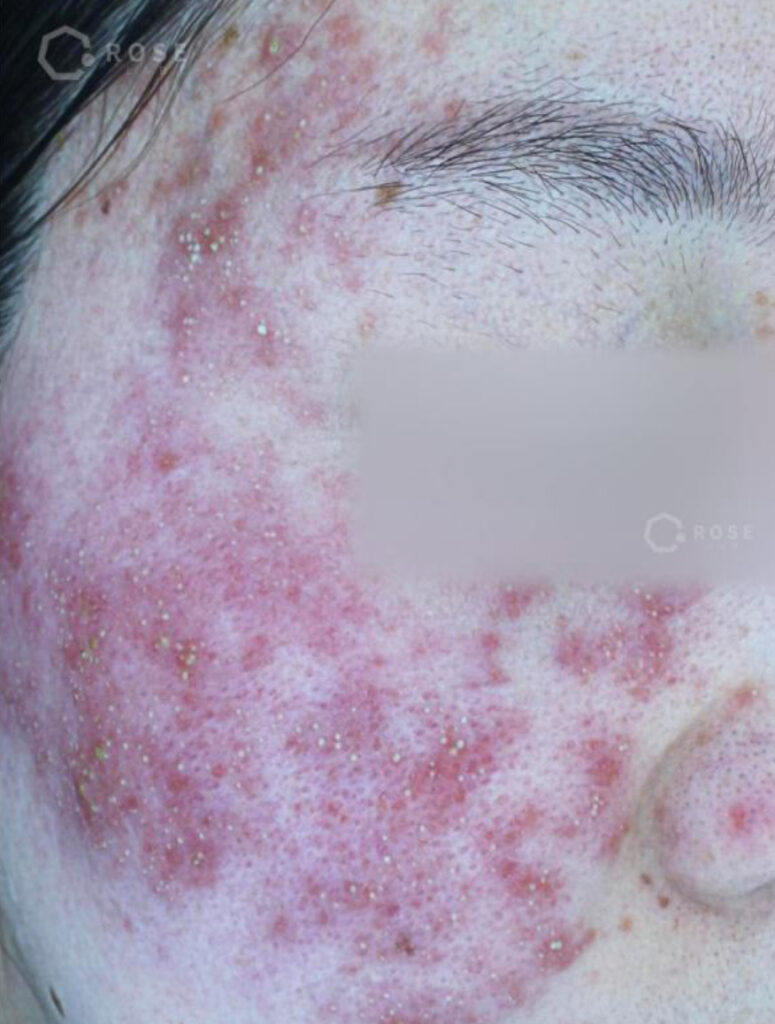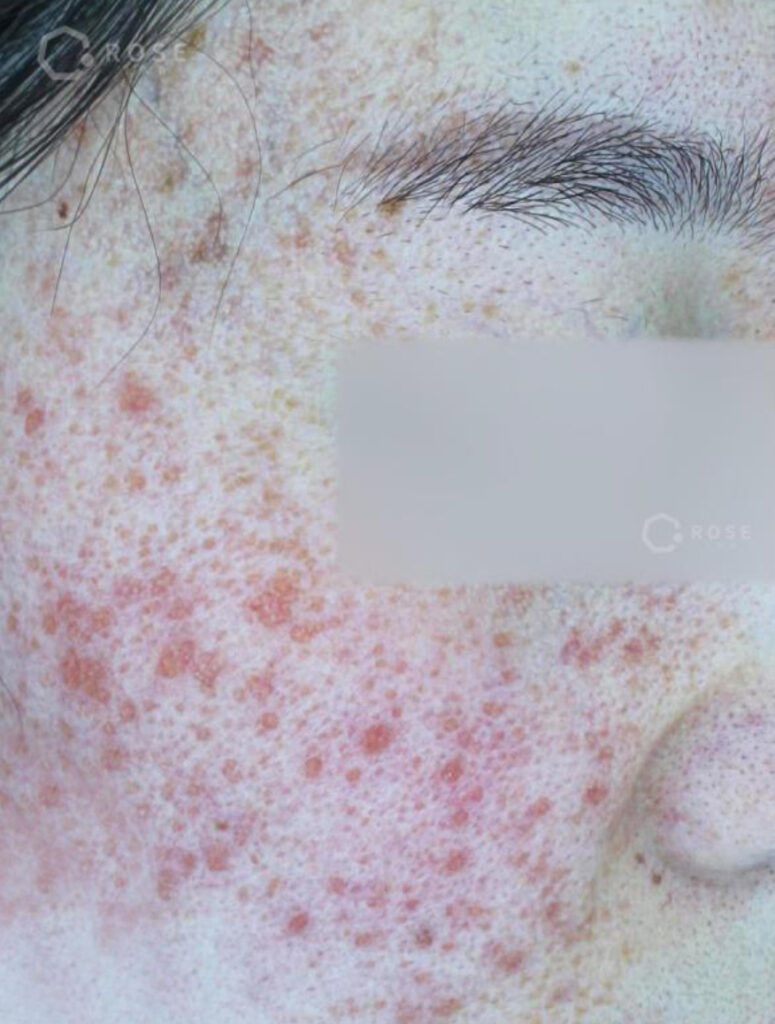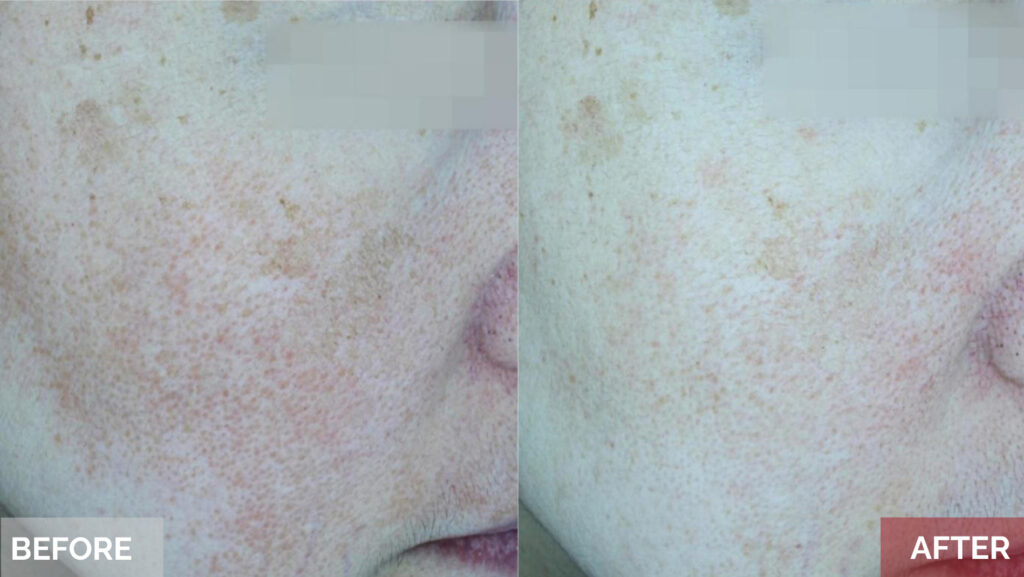Case Study
Case Study Report
PAPULOPUSTULAR ROSACEA
Treatment Modality Female/32
- PORZELLAN + Argon plasma
- doxycycline 200mg / Per a day
- TOPICAL IVERMECTIN
- ULTRASOUND wave tx.
- NEGATIVE ION tx.
#After three initial sessions of standard combination therapy with no improvement, PORZELLAN® was decided to be incorporated into the treatment plan.


Rosacea Treatment
- REVIEW article
- Front. Med., 13 December 2023
- Sec. Dermatology
- Volume 10 – 2023 | https://doi.org/10.3389/fmed.2023.1292722
- Rosacea pathogenesis and therapeutics: current treatments and a look at future targets
- Garrett W. FisherGarrett W. Fisher1Jeffery B. Travers,, Jeffery B. Travers1,2,3Craig A. Rohan,, Craig A. Rohan1,2,3*
- 1Departments of Pharmacology and Toxicology, Boonshoft School of Medicine at Wright State University, Dayton, OH, United States
- 2Dermatology, Boonshoft School of Medicine at Wright State University, Dayton, OH, United States
- 3Department of Medicine (Dermatology), Dayton Veterans Administration Medical center, Dayton, OH, United States
- Rosacea is a chronic inflammatory skin condition associated with a significant health and economic burden from costs and loss of productivity due to seeking medical treatment. The disease encompasses multiple phenotypic manifestations involving a complex and multivariable pathogenesis. Although the pathophysiology of rosacea is not completely understood, ongoing research is continually elucidating its mechanisms. In this review, current concepts of rosacea pathogenesis will be addressed which involve skin barrier and permeability dysfunction, the innate and adaptive immune systems, and the neurovascular system. More specifically, the cathelicidin pathway, transient potential receptor channels, mast cells, and the NLRP3 inflammasome pathway are various targets of current pharmacological regimens. Future therapies may seek different mechanisms to act on current treatment targets, like the potential use of JAK/STAT inhibitors in ameliorating skin barrier dysfunction or TLR antagonists in alleviating cathelicidin mediated inflammation. Other potential treatments aim for entirely different molecular targets such as microvesicle particle mediated local and systemic inflammation. Ultimately rosacea is associated with a significant health and economic burden, which warrants deeper research into its pathogenesis and resultant new discovery.
Rosacea Treatment
Case Report
- Patient Information: Female, 31 years old
- Hospital: CNP Dermatology, Dr. Hyun-Jo Kim
- Treatment Overview: After being diagnosed with rosacea, the patient underwent more than three combined treatments, including oral medications, topical treatments, plasma, ultrasound, and negative ion – based energy device therapy. However, there was no improvement in the symptoms.

Following the Porzellan + Plasma treatment, which was performed at intervals of 1-2 weeks, with at least three sessions, significant symptom improvement was observed. By around the 10th session, the patient’s symptoms showed remarkable improvement, with the skin returning to a near-normal condition.

No improvement was observed

Three sessions of traditional combination therapy.
After Porzellan treatment, there was a clear reduction in symptoms


After Three (3) sessions using Porzellan and plasma treatment.
The treatment restored the skin to a near-normal level

After Ten (10) sessions of Porzellan and plasma treatment.

Case Study Report
ERYTHEMATOTELANGIECTATIC ROSACEA
Treatment Modality Female/45
Porzellan + Argon plasma
One week after starting Porzellan treatment, combined therapy with Porzellan and Argon Plasma was initiated at the patient’s request.
#. From the second session, the patient observed rapid improvements in skin texture, hydration, and redness.
#. After approximately 15 sessions of combined treatment, the patient showed near-complete recovery and is currently under follow-up observation.
Case reports :
Combination of polycaprolactone-based topical formulation and nonablative cold atmospheric plasma in the treatment of rosacea
Key Findings
- Significant reduction in facial erythema, telangiectasia, and inflammatory papules.
- Greater improvement observed with CAP + PCL topical application than CAP alone.
- No major side effects or adverse reactions reported.
- Rosacea symptoms remained stable post-treatment with maintenance therapy.


